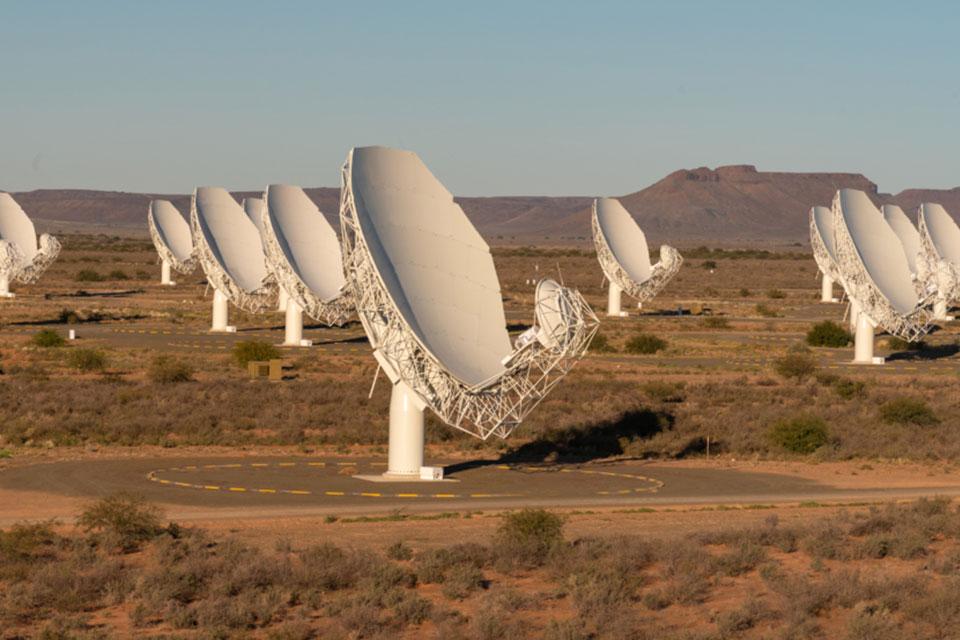An international team of scientists has published the largest pulsar survey to date. Two papers published today in the Monthly Notices of the Royal Astronomical Society – one led by the University of Oxford, the other by the University of Manchester – detail observations of more than 1,200 pulsars representing more than one third of the known pulsars. Their findings not only give a unique insight into radio emission patterns that contradict current thinking but also suggest there may be a larger population of pulsars yet to be discovered than previously expected.
The findings have come out of the Thousand Pulsar Array (TPA) project, an international collaboration aimed at finding out more about pulsars. Radio pulsars are spinning neutron stars from which we can observe flashes of radio waves in the manner of light pulses from a lighthouse. With masses of about one and a half times the mass of the Sun, and sizes of only about 25 km, neutron stars are the densest stars known. They rotate extremely fast, typically once every thousandth of a second to once every ten seconds, only gradually slowing down as they age. Neutron stars are also the strongest magnets in the Universe, on average a million times stronger than the strongest magnet on Earth. Such extreme properties present an opportunity to test the laws of physics with exceptionally high accuracy. Even 60 years after their discovery by Professor Jocelyn Bell Burnell, fundamental questions about the nature of these exotic objects remain.
MeerKAT: unprecedented sensitivity
To get their latest results, the TPA exploited the unprecedented sensitivity of the MeerKAT radio telescope – 64 antennas in the Karoo desert in South Africa and a stepping stone to the ambitious UK-led Square Kilometre Array project. Co-author Dr Aris Karastergiou of the University of Oxford explains the significance of analysing such data: ‘The radio pulses carry most of the information we have about the characteristics of each star, but in a language that is only partially understood. There are basic questions about how and where the radio emission arises, which these data allow us to address in new ways.’
Statistical properties of pulse shapes
The first of the two papers, led by researchers at Oxford’s Department of Physics, presents the statistical properties of the pulse shapes. Dr Bettina Posselt explains: ‘We find that the most important property governing the radio emission of a pulsar is its so-called spin-down power. It quantifies the energy set free by a neutron star each second as its rotation slows down. Some of this spin-down power is used to produce the observed radio waves.’
Models predict that the ionised gas surrounding the star continuously discharges in what can be compared to lightning storms, producing the radio pulses. The new data indicate that the spin-down power influences how high above the neutron star surface the radio emission takes place and how much energy the charged particles are endowed with. Since there is evidence that the spin-down power decreases with age, and the 1,200 pulsars exhibit large variety in spin-down power, the TPA data are ideal to study the ageing of neutron stars.
The new data show that even pulsars with the least spin-down power emit intense radio emission and can be detected up to large distances. This result suggests there may be a larger population of pulsars yet to be discovered than previously expected.
Radio pulsar patterns
The second major work, led by researchers at the University of Manchester, details the findings of the study of over 1 million individual flashes recorded. The sequence of flashes can be visualised as a train of pulses; Dr Patrick Weltevrede of the University of Manchester describes: ‘Observing a pulsar is like checking the pulse of a pulsar, revealing the particularities of its “heartbeat”. Each individual pulse is different in shape and strength.’ For some pulsars, ordered patterns of diagonal stripes appear when visualised.
Dr Xiaoxi Song explains: ‘The superb quality of the TPA data and our sophisticated analysis allowed us to reveal these patterns for many pulsars for the first time.’ These patterns can be explained by the lightning storms swirling around the star and the findings point to something fundamental about how pulsars operate. After the pulsar is born, the lightning storms swirl around the star fast and chaotically. After a few million years, the lightning storms settle down: the patterns become slower and steadier. This turns out to be the opposite to what models predict. Eventually, after a few billion years the lightning will stop altogether, and pulsars will no longer be detectable.
The TPA data from both projects are now publicly available. They enable the international community to pursue further studies both on the properties of these pulsars and those of the intervening interstellar space. The TPA team includes researchers from the UK, Australia, Germany, Italy, Poland, and South Africa.
The Thousand-Pulsar-Array program on MeerKAT: IX. The time-averaged properties of the observed pulsar population, B Posselt et al, MNRAS
The Thousand-Pulsar-Array programme on MeerKAT: VIII. The subpulse modulation of 1198 pulsars, X Song et al, MNRAS
The video shows on the left the averaged pulse profile of each individual pulsar from the Thousand Pulsar Array project. The gauge indicates the corresponding spin-down power – the energy available to the pulsar per second as it spins down; the spin-down power is also represented by the x-axis in the right plot. The y-axis of the right plot shows how luminous a pulsar is in the radio band observed by MeerKAT. As the video goes through the list of pulsars with increasing spin-down power, one can see a trend for increasing radio luminosity. The final compilation of the 1,170 pulsars clearly shows this trend. However, the relation between spin-down power and radio luminosity is much flatter than what has previously been assumed. This means, one can see less powerful, ie typically older, pulsars up to larger distances enabling us to study how the radio emission changes as pulsars age.

